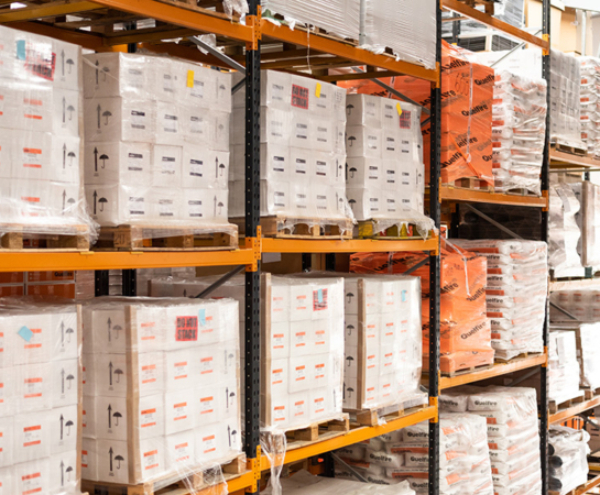
We have recently talked about what we believe competency means in the context of fire safety in the construction industry, from a contractor/ installer point of view. [See: The formula for competency]
We established that there is more to competency than knowledge, skill, or experience and talked about ethics, the culture of copy and paste, and the importance of knowing one’s limitations.
For us, competency is knowing what you don’t know and being prepared to ask for help. This often works for those who find themselves in a situation where they understand that what is being asked of them is outside of their competence, but could find suitable assistance to complete the job. In other cases, it is also about knowing your limitations and when you’re not the most suitable person for the project.
But where do the limitations of a manufacturer’s competency lie? What does a competent manufacturer look like? For a manufacturer, it is about understanding the requirements of a project and supporting the delivery of best practices in firestopping. Competency is important for a fire safety manufacturer because ultimately, their products work to save lives and protect property.
But also, because all parties, from architects to installers, rely on the manufacturer when it comes to design and installation. Without a competent manufacturer, compliant installations would be harder to achieve.
What supports the competency of a manufacturer?
Competency can be hard to measure, assess or evaluate directly because there is no benchmark to compare it to. Nevertheless, it can be observed through:
Skills: No matter how competent you think you are, or how many years you have spent studying, everyone still needs to refresh their skills every once in a while, and keep up to date with current practices. Therefore, training and actively looking for opportunities to broaden your knowledge is highly recommended. That’s why it’s imperative for manufacturers, especially their technical teams, to keep their skills up-to-date and align them with current regulations and trends.
Knowledge: Thirst for knowledge is key. Wanting to gain further knowledge about your niche sector, and even areas that go beyond, gives you a broader way of viewing challenges faced in the industry. This is not only through third-party training but by building and surrounding yourself with professionals who support growth and have the right mindset when it comes to fire safety. Engaging with professionals in the industry, gaining insight into customers’ challenges, and open conversations on platforms, such as industry media and events, all contribute to a manufacturer’s knowledge.
This also includes qualifications. While they don’t make you fully competent, there is no doubt that they play an important role in establishing a foundation for initial skills, knowledge, and understanding. While qualifications alone won’t make the manufacturer’s team members competent, they significantly contribute to their competency when supporting their customers.
Experience: This is the gained knowledge through direct observation or participation. It builds into competency by allowing you to gain more awareness and understanding of your sector. Having decades of experience in supplying firestopping solutions, and direct insight into the challenges and motivations of trades involved is another important factor that contributes to competence.
But what else is involved in competency?
Skills, knowledge, and experience are usually the first three factors that are used to define what competency means. As mentioned previously, we believe that competency goes beyond these and can also be supported by:
- Language
It is the manufacturer’s responsibility to use the relevant language and tone of voice depending on their audience. In fire safety, it is important to say what you mean and mean what you say. All information and language must be clear and precise, supporting the customer and thus, leaving no room for error.
- Cultural change
When it comes to manufacturing, we believe that your job isn’t merely to just produce and sell firestopping products, but to contribute to cultural change across the wider industry. Cultural change does not happen overnight. Someone has got to take the lead. Therefore, manufacturers must also play their part in educating the industry on their product suitability, wider fire safety matters, and regulation updates. Manufacturers may not know it all, but they have a responsibility to share the information that they do know.
- Ethics
Whilst you can tangibly measure someone’s qualifications or skills, it is also about your attributes and how you use them to apply your skills that makes you competent.
Manufacturers must act in the interest of the future occupants of the building. Decisions must be based on company values. For example, at Quelfire, if we don’t have a firestopping tested solution, then we won’t sell the product because this goes against what we believe in which is protecting people and property.
Competency and ethics work coherently together, you can’t have one without the other. If we did not have a tested solution for a customer’s application but proceeded to sell them a product for an untested application, then this would not be competent or ethical.
It wouldn’t make us competent as we proceeded to sell a product even when we weren’t the most suitable manufacturer for the application in question. It also wouldn’t make us ethical because we have acted from the perspective of financial gain rather than the interest of the safety of future occupants of the building.
When the customer and manufacturer are on the same page, striving for ultimate building compliance, neither party’s ethics will be jeopardised. Again, it is about asking the right questions and establishing whose values line up with yours.
- Knowing your limitations
Knowing your limitations comes with the experience of knowing that you are not going to be the right fit for every project. Most importantly, it saves lives, but it can help save time and money too.
As exemplified above, ethics feeds into knowing your limitations. Manufacturers must understand the limitations of their fire testing and work transparently. This is important because it is the difference between a product being installed correctly and incorrectly: the difference between a contained fire and a destructive fire.
An obvious example would be the widespread misconceptions of ‘fire-rated’ foam. Due to a poor understanding of its use and suitability, there have been cases where it has been used incorrectly to firestop any leftover gaps around service penetrations.
However, if you check the small print of some fire foams, they require other products to be used in conjunction – for example, intumescent sealant. Manufacturers need to make this limiting information extra clear and further educate the industry on what ‘up to’ fire rating means on their tested products.
A culture of copy and paste
Competency is the act of understanding the why, thinking for yourself, and knowing how something works. Currently, there is a culture of training people to copy and paste, without questioning the source of information. All parties need to be trained on the importance of doing their due diligence.
The construction industry can be fairly complacent in terms of assuming that everyone is competent. For example, a qualified electrician is competent to wire up a socket box but is then asked to firestop the socket using a putty pad. Whilst it is not hard to install a putty pad, does the electrician understand why they are installing it and that it is a life safety critical element?
Competency is not solely about whether you can do something, but whether you know the fundamentals of what you’re being asked to do. Most manufacturers offer support from design through to installation, providing training such as CPDs or toolbox talks. At Quelfire, we go one step further by offering early engagement meetings and having a range of sample boards as a benchmark for compliant installations for when customers visit.
Manufacturers understand that there is a lot of information out there and therefore, do not assume that all parties from architects to installers are masters of everything.
Communication, collaboration, and the sharing of knowledge. Working this way ensures that all parties are on the same page, working to best practices and showing that they are competent.
To conclude, competency cannot be measured on one basis. It depends on multiple key factors from the practical side like skills and experience to the more personal attributes such as ethics and knowing your limitations.
Competency is about welcoming changes, new best practices, and remaining flexible. To be competent, there must be a willingness to do the work and put in the effort required.
It is important for people to also understand that there are manufacturers and system suppliers, like ourselves, who are willing to provide support and an evidence-based solution.
Help is available and it is not wrong to not know all the answers.

